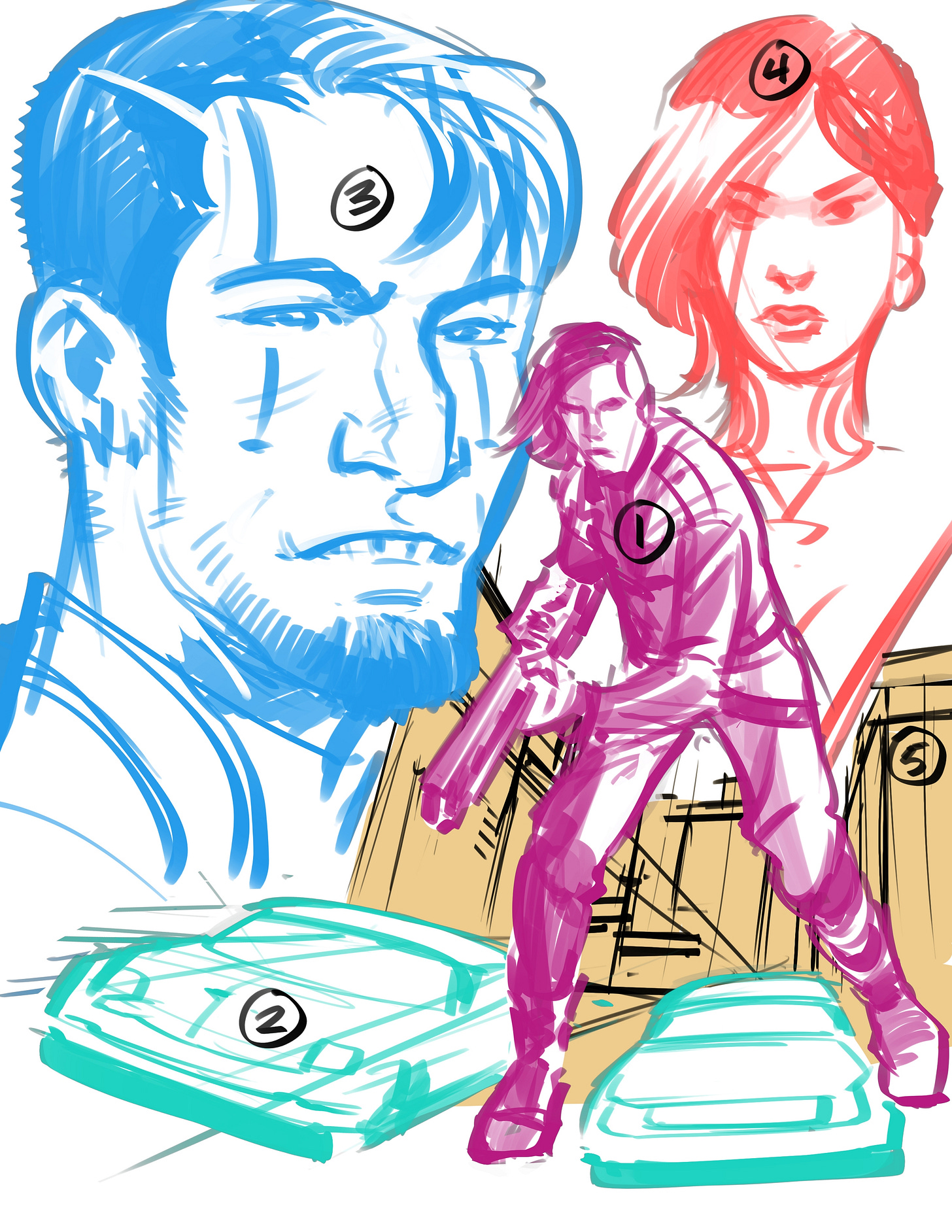The POWER of MONTAGES
How to Effectively ENCAPSULATE STORY in One Image
If you're not familiar with Drew Struzan's film poster work from the last three decades, there's a chance you missed out on a masterful way to create a story synopsis.
The MONTAGE is a classic illustration layout that features many of the main players of the story. Using a variety of layers and contrasting scale, one can conceivably encapsulate the biggest idea of story.
I use this tool in a variety of ways. Here's why it's so powerful:
I can test out character SHAPE RELATIONSHIPS
I can experiment with LOOK & FEEL
Creating KEY ART as a VISUAL TARGET helps the rest of the project
I can EVALUATE COLOR PALETTES
I can see if the STORY is EASILY UNDERSTOOD
I can RENDER TO VARIOUS SCALE when working in a NEW STYLE
The last one is personally one of the most important things about it. At least to me. Here's a few things to consider:
How does your style change when working on people, places, and things at different sizes?
Can you maintain the necessary integrity?
Do you simplify elements as they get smaller?
Do you use heavier strokes and bolder color on things that are closer or larger?
Does the work wobble and go off the rails when drawing large or small?
I recently had a job that pushed me in an unexpected way. I had to deal with drawing a legion of soldiers and I struggled to know how to simplify it. I wanted to use heavy shadow to just indicate them, but I penciled in all the detail of their historically accurate uniforms, not even thinking about light. But there I was, holding my brush over the subjects and I didn't know what to do.
I'd been working on this one particular style for some time, but I didn't take my own advice before this project started. I didn't montage anything. Up until that point it's been theoretical and I'd never pressure-tested it.
THE MONTAGE WILL HELP PRESSURE-TEST EVERYTHING!
Besides, it'll be the most fun you'll have before you jump into the trenches of production, with all its aches and pains.
THE ABOVE MONTAGE EXPLAINED:
#1 Is typically a shot of the HERO(ES) and gives you an opportunity to do a full body shot. A Medium Shot.
#2 VEHICLES are hard to render but if you have no vehicles/ships then a small CROWD SCENE will put you through your paces. Remember, to challenge scale.
#3 The VILLAIN is usually this large looming figure. It also gives you a way to figure out how good you are with Close-Ups.
#4 A SECONDARY CHARACTER or FEMALE/MALE that wasn't part of the Hero/Villain shot. This gives you another face scale in-between the Hero/Villain sizes. Also an opportunity to work on fine rendering of beauty if you hadn't had the opportunity yet.
#5 CITYSCAPES with lighting can be their own challenge. If you have no city, think of ARCHITECTURE...or some Hard Surface dwelling with flora where needed.
Also worth noting, is do another MONTAGE when you've finished your project. You'll be amazed at the results!
It'll show you:
How much you've LEARNED about the CHARACTERS and STORY
GAINED CONFIDENCE in your STYLE
And it'll be another nice MARKETING PIECE to help sell the project
Try it out and see what I'm talking about. You might learn something about your approach that needs addressing before you start. Fix it, find a new way to show your idea or build up the skill needed to execute.
I know for one, I'm going back to the drawing board for this new art style to embrace the MONTAGGIO!
=s=



